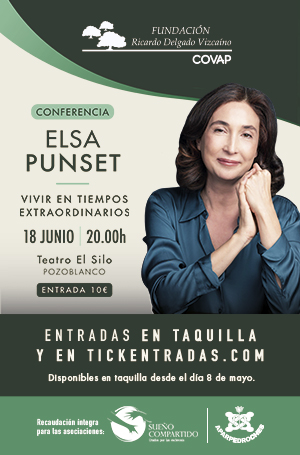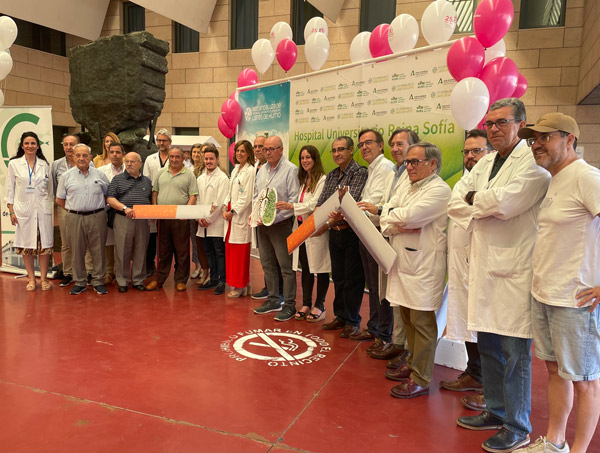

- It is especially necessary to influence the education of childhood and adolescence to prevent the age of initiation of consumption from continuing to decline.
The Reina Sofía University Hospital commemorates one more year with preventive activities on World No Tobacco Day that this year the WHO focuses on the protection of children and adolescents against the messages of the tobacco industry. In this sense, the hospital specialists point out that childhood and adolescence are key periods in the acquisition of healthy lifestyle habits, which will remain throughout life, and attention must be paid at these ages since the electronic cigarette is becoming popular. fashion among preteens, to whom it is presented as an alternative to tobacco.
The head of the Pulmonology service, José Manuel Vaquero, has presented some of the main data handled by the Neumosur Association and the European Health Survey in Spain for the year 2020, which indicate that the 16.4% of women and 23.3% of men smoke daily. Regarding the trend, he noted that in 2022 there has been a decrease in the prevalence of daily tobacco consumption among young men, while it has stabilized among younger women. Evolutionarily, the growing trend in electronic cigarette consumption continues, having gone from 6.8% in 2015 to 12.1% registered in 2022.
In this context, tobacco is positioned as the second psychoactive substance (behind alcohol) with the highest prevalence of consumption. among students from 14 to 18 years old and 38.2% of young people indicate that they have smoked tobacco at some time in their life.
In addition to voluntary consumption, we must take into account the negative impact on health that many boys and girls suffer from being passive smokers, since this smoke contains up to three times more nicotine and tar than direct consumption, with about five times more carbon monoxide.
In 2022, the Autonomous Community of Andalusia approved an important update of the Comprehensive Tobacco Plan (PITA) 2022-2025which seeks to integrate the most appropriate actions for the prevention of smoking in different areas, ensure quality assistance, define and develop actions for groups in disadvantaged or particularly vulnerable situations, promote the collaboration of other sectors and the participation of all associations that carry out active work, in addition to launching the necessary training and research.
Consequences of smoking
In Andalusia, tobacco is the first identified cause of preventable mortality and morbidity. Smoking causes at least ten years of life lost and up to 21% of all deaths, being the main cause of death from cancer, cardiovascular and lung disease. Regarding the latter, it should be noted that tobacco is behind 90% of lung cancer cases, and is a fundamental causal agent in a multitude of other cancers, such as those of the head and neck, bladder, kidney, esophagus, pancreas, stomach. and colon and rectum, among others.
He lung cancer It is the third most detected in Spain and of which about 5,000 cases are diagnosed per year in Andalusia (which represents a prevalence of 15.21 cases of this type of cancer per 10,000 people). Currently, the overall five-year survival rate for lung cancer is very low, barely reaching 20%. In fact, lung cancer is the largest cause of cancer deaths each year worldwide, 18.2% of total cancer deaths (1.8 million people). In Spain, in a similar situation, we are talking about 19.7% (2022 data), with 22,727 deaths from lung cancer, of which 16,760 were men.
Along these lines, specialists point out the serious consequences of tobacco consumption, since each cigarette contains more than 4,000 chemical substances (60 carcinogenic), which increases the risk of suffering from chronic diseases such as lung cancer (11 out of 12 people with lung cancer is due to tobacco), chronic obstructive pulmonary disease, liver cancer, acute myocardial infarction, pancreatic cancer, arrhythmias, stomach cancer, stroke, bladder or cervical cancer, diabetes, myeloid leukemia, gastrointestinal ulcer, larynx and mouth cancer, among others .
Regarding the use of electronic cigarettes and hookahs, specialists remember that they can also contain nicotine and other irritating chemicals that are harmful to health.
All this without taking into account the impact on the environment. Each year, the tobacco industry costs the world more than 8 million human lives, 600 million trees, 200,000 hectares of land and 22 billion tons of water, and generates 84 million tons of CO2, according to Neumosur data. And it takes about 10 years for a cigarette butt to disintegrate.
Hospital data
In the hospital setting, the Occupational Health Unit offers different intervention programs, among which is the smoking cessation consultation. As explained by the specialist of this service, Azahara Alcantarilla, “the tobacco consultation is carried out jointly by the unit, Occupational Medicine Nursingwhere professionals who want to take another step in their smoking cessation are offered tools to achieve this with a consultation where diagnosis, treatment and follow-up are offered on an individualized basis.”
The data obtained in the last year of the smoking consultation show data very similar to those of the general population. Thus, among smokers, 55% have requested to enter the cessation program and, of them, 65% have managed to quit tobacco, with a relapse rate of 10%. The rest of the people are in the phase of setting a date to start the action phase.
“The treatment applied by the professionals depends on the phase of addiction in which you are and always programming with them the best way that can be proposed according to your needs. The cognitive-behavioral therapy together with pharmacological treatment It is the most effective, and so far it has had very good results in this regard,” says the specialist. In addition, she has pointed out the need to combat new forms of tobacco, with the false sense of harmlessness and which in many cases is the way to start smoking.
Activities
Throughout the day, professionals from different hospital services will inform patients and professionals about the negative health effects of consumption and exposure to tobacco smoke. To do this, an information table will be installed on the covered street and will be distributed by entrances, floors, common areas, waiting areas, etc. as well as on the screens in hospital buildings and elevators, in order to reach as many people as possible. In addition, there will be collaboration from institutions and groups such as IMIBIC, the College of Pharmacists, patient associations, among others.
At the information table (another one will also be installed at the Palma del Río Hospital), the Smokers will be able to exchange cigarettes, calculate their savings if they stop smoking, obtain a specific diploma with your quit commitment, as well as obtain advice to quit smoking. This year, also on the table, drawings that hospitalized children have made with the help of the teachers who work in the hospital will be displayed, in order to also raise awareness on the subject.
Furthermore, this year it will be offered to all people who come to the table an alternative to smoking: healthy eating, through the gift of tubs of fruit, ice cream and healthy smoothies, prepared by the hospital’s Hospitality and Comfort service. All these activities have the collaboration of professionals from the area of Occupational Health, Occupational Medicine, Occupational Risk Prevention and the services of Pulmonology, Otorhinolaryngology, Cardiac Rehabilitation, Cardiovascular Surgery, Cardiology, Thoracic Surgery and Lung Transplant, as well as Comfort personnel , Hospitality and Kitchen, guards, technicians and other personnel.
Under the motto of other years ‘NO + Fumes, NO to bad SMOKES’, The hospital insists on the need to give up this habit if you are already a smoker or the importance of not starting, given the enormous negative consequences on your health.
SUBSCRIBE TO OUR TV CHANNEL HERE
Featured events in Los Pedroches

